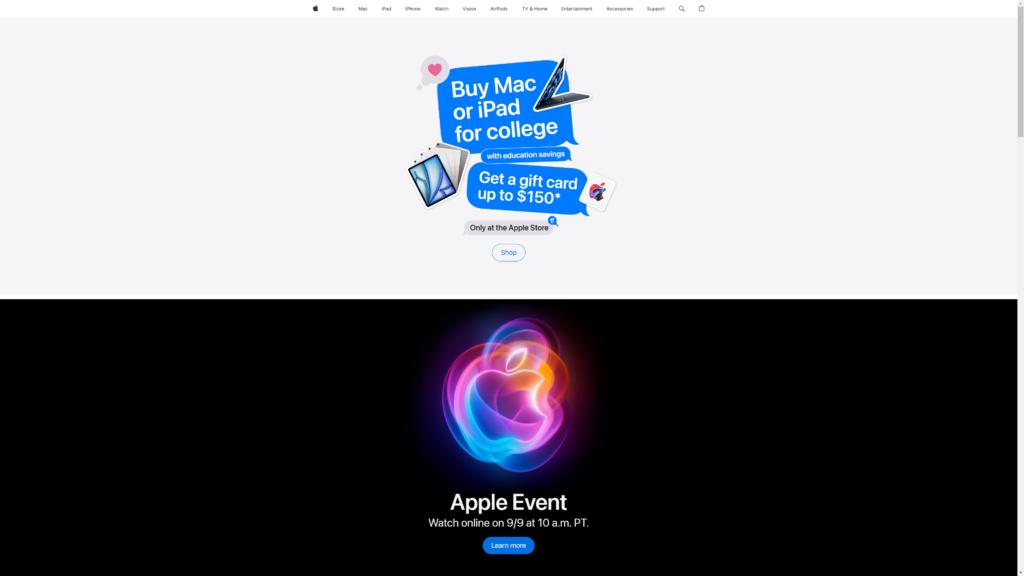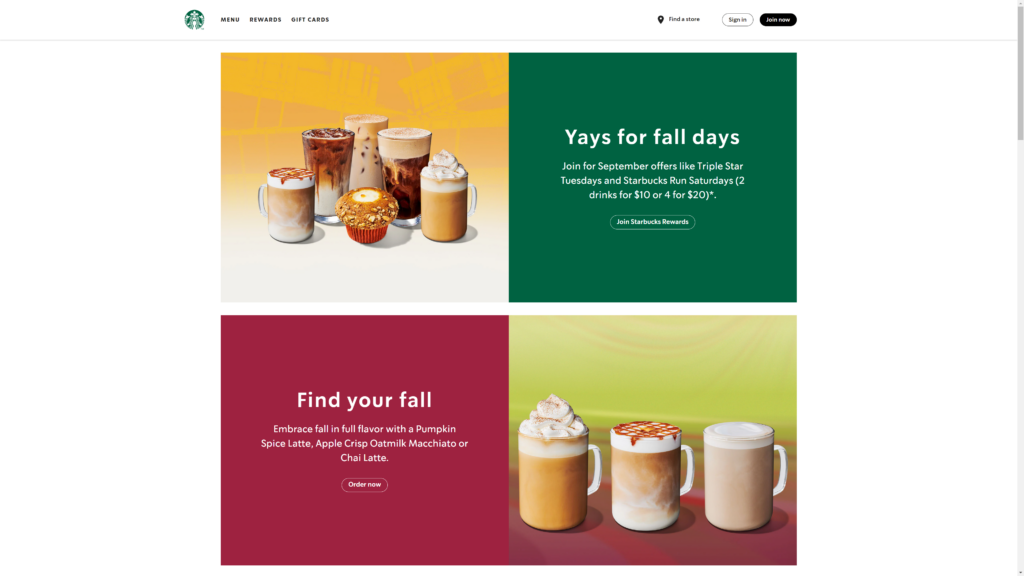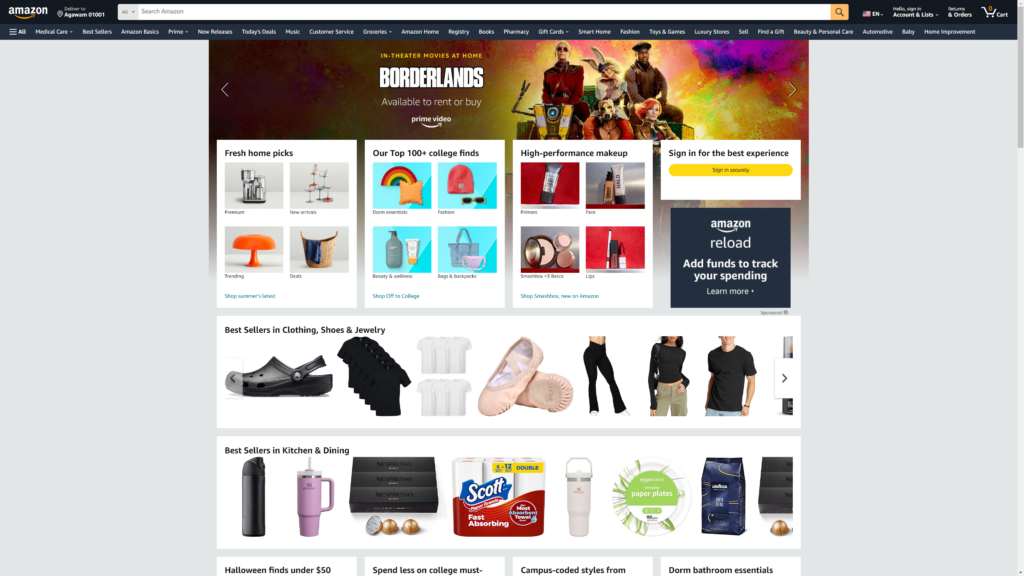Welcome! 🎉 If you’ve ever wondered how web design can be your best ally in digital marketing, this article will guide you through every detail. Discover how iconic brands use web design to capture, convert, and retain their customers. Let’s get started!
1. First Impressions Matter: The Gateway to Your Success

People take less than 50 milliseconds to form a first impression of your website. Those first few seconds are crucial. Vibrant colors, high-quality images, and clear typography can make all the difference between grabbing or losing a visitor’s attention. Minimalism, when executed properly, can be highly effective, allowing the most important elements to shine. Is your website inviting users to stay?
Apple is a master of visual simplicity. Their homepage perfectly executes minimalism, with product images dominating the screen, sober colors, and a clean design that guides users toward calls to action (CTA). From the moment you land on their site, you’re drawn in by the brand’s elegance and style.
2. Responsive Design: Ready for Every Screen?

70% of web traffic comes from mobile devices. If your site isn’t optimized for all screen sizes, you’re missing out on a huge portion of your audience. A responsive design ensures that your website looks and functions correctly on any device, providing a seamless experience. Google also rewards mobile-optimized sites, improving their search rankings. Successful brands understand the importance of reaching their users across all platforms.
Starbucks offers an exceptional user experience on mobile devices. Their website adapts perfectly to any screen, retaining its visual and functional integrity. Whether ordering online or browsing their coffee selection, users enjoy a smooth and simple experience across all devices.
3. Page Load Speed: No One Has Time to Wait

Users abandon a page if it takes more than three seconds to load. In addition to frustrating visitors, slow load times negatively affect your SEO. Optimizing images, using a fast server, and enabling caching are essential steps to ensure your site loads instantly. Every second counts when it comes to grabbing a user’s attention in the competitive digital world.
Amazon has invested millions to improve their site’s speed, knowing that every millisecond counts in e-commerce. They use optimized images and a content distribution network (CDN) to ensure their site loads quickly, regardless of where users access it. Their fast-loading pages help keep users engaged and drive higher sales.
4. SEO Optimization: Design and Search Ranking Working Together
A well-designed website isn’t just attractive to users—it’s also appealing to search engines. SEO optimization starts with the structure of your site: clean URLs, clear headings, and a good hierarchy of information. Design and SEO are a winning team when they work hand in hand. If your site is SEO-friendly, you’ll not only attract traffic but retain it with an organized and user-friendly layout.
Neil Patel, a marketing expert, has perfected the balance between design and SEO. His site is structured with clean URLs and well-organized headings that allow search engines to crawl and rank his pages effectively. This blend of visual appeal and SEO optimization helps his content stay at the top of search results.
You might be interested in
A Practical guide to digital branding on social media
5. Intuitive Navigation: The Art of Guiding Without Confusion
Your website should be easy to navigate. A clear, well-organized menu acts like a map guiding users to the information they seek. If users feel lost, they’ll quickly abandon the site. A search bar is also a great tool for improving navigation. The key is to simplify the path to conversion by removing any unnecessary obstacles.
Nike has mastered navigation, offering users a seamless browsing experience. Their menus are simple and clear, with well-organized categories and filter options that allow users to quickly find what they’re looking for. Whether shopping or reading stories, the navigation is designed to help users access information easily.
6. Consistent Visual Identity: Because Consistency is Key
A consistent visual identity is essential to building a strong brand. From color schemes to typography and imagery, everything should align with your brand’s personality. Consistency builds trust and facilitates recognition. Users should be able to identify your brand without needing to see your logo. This coherence should be present across all platforms where you have a presence, not just your website.
Coca-Cola has maintained a consistent visual identity for decades. From its iconic red color to its classic script logo, every aspect of its website reflects the brand’s personality. This consistency ensures that wherever users interact with the brand, they experience the same recognizable feel.
7. Clear Calls to Action (CTA): Guide Users to Conversion
Calls to action should be visible, direct, and appealing. Action verbs like “Discover,” “Buy,” or “Subscribe” are essential to persuade users to take the next step. Additionally, CTAs should stand out visually to grab the user’s attention. Strategically placing them throughout your page is key to guiding users through their journey toward conversion.
Dropbox makes excellent use of CTAs. Their “Try Dropbox Business Free” button is highlighted in blue against a clean white background, making it impossible to miss. This CTA is strategically placed at the top of the page, ensuring that users can take action without having to scroll.
8. Attractive Visual Content: The Age of Imagery
Images, videos, and graphics are essential to keeping users engaged. Visual content conveys complex messages quickly and efficiently. However, it’s important to ensure these elements are optimized so they don’t slow down your site’s load time. The balance between visual appeal and functionality is key in effective web design. Brands that master visual content succeed in capturing their users’ imagination and keeping them interested.
Airbnb’s use of high-quality images enhances its web design. Their photos don’t just show places—they tell a story of the experiences users can have. Every image is carefully chosen to inspire users, all while maintaining a smooth, fast-loading experience.
9. User Experience (UX): Design with People in Mind
Web design isn’t just about aesthetics; it’s about functionality too. User Experience (UX) focuses on how visitors interact with your site and how they feel while doing so. A well-designed UX makes it easy for users to find what they’re looking for quickly and effortlessly. User experience directly influences conversion rates, and good UX can make the difference between a satisfied customer and a frustrated one.
Spotify offers a near-perfect user experience across its platform. Whether on the web or through its app, users can navigate, create playlists, and discover new music with ease. Their minimalist and intuitive interface is designed to keep users engaged without distractions.
10. Web Security: Trust is Everything
Security in web design is critical. A secure site builds trust among users and protects data from being compromised. Implementing SSL certificates, safeguarding personal information, and ensuring secure payment methods are fundamental aspects of any modern website. Users need to know they can trust your site, especially when it comes to sharing sensitive information.
PayPal is known for its strong security measures. They not only protect users’ financial information but have gained the trust of millions through their constant investment in security protocols. Their website is designed to put users at ease from the first click.
11. Continuous Testing and Improvement: Web Design Never Stops
Web design is an ongoing process of testing and improvement. What worked yesterday may not be effective tomorrow, so it’s crucial to conduct A/B testing, use analytics tools, and listen to user feedback. User behavior changes, and your site needs to adapt to continue providing an exceptional experience. The brands that thrive in the digital space are those that are willing to evolve constantly.
Netflix is constantly conducting A/B tests to improve user experience. From changes in homepage design to personalized recommendations, they are always optimizing their platform based on user behavior and data insights. This commitment to testing ensures that Netflix continues to offer a top-notch experience for its millions of users.
How GGyess Can Help Improve Your Web Design Strategy
With GGyess, you can harness artificial intelligence to generate creative ideas, optimize visual content, and schedule posts so that your entire team is aligned with a clear and effective strategy. Need fresh ideas or powerful copy to complement your design? GGyess’s AI can help you create personalized content that resonates with your audience and fits your website’s needs. Get started today and see how it can take your web design to the next level!



